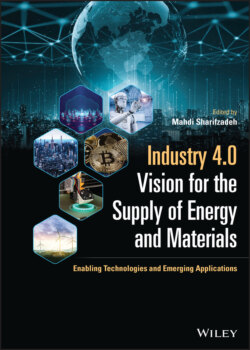Читать книгу Industry 4.0 Vision for the Supply of Energy and Materials - Группа авторов - Страница 76
1.10 Conclusion
ОглавлениеIndustry 4.0 is a blueprint that digitizes the value chain and is highly instrumental in bringing physical production processes and their inherent real-time control functionalities to life. An essential aspect of implementing Industry 4.0 is the seamless connectivity of all value creation factors: service user, marketplace, and service provider. This concept envisages smart environments that offer a certain degree of automated control and processing, with minimum human interventions. At the core of this networking and integrated data concept is seamless communication that connects industrial environments and production areas. Diverse wireless standards and technologies are available to accelerate the deployment of smart technologies in process control and automation applications.
In this chapter, we first reviewed the concept of Industry 4.0 along with its technological requirements and applications. Subsequently, we detailed wireless technologies and international standards in this context. Since each wireless solution has its own pros and cons, we compared them based on a set of technical performance metrics to assist in choosing the appropriate wireless communication for a given application. Considering that existing wireless systems will be complemented or replaced by new developments such as cellular networks and MTC communications, such technologies were also fully covered in this chapter. A list of objectives in terms of resource and service indicators was also provided for an efficient design of wireless networks in IIoT environment. Finally, MAC protocols and smart sensors were discussed to address the key issues in the design process of wireless connectivity in the industrial Internet. We also reviewed a number of future research trends and directions in wireless communication for Industry 4.0.
